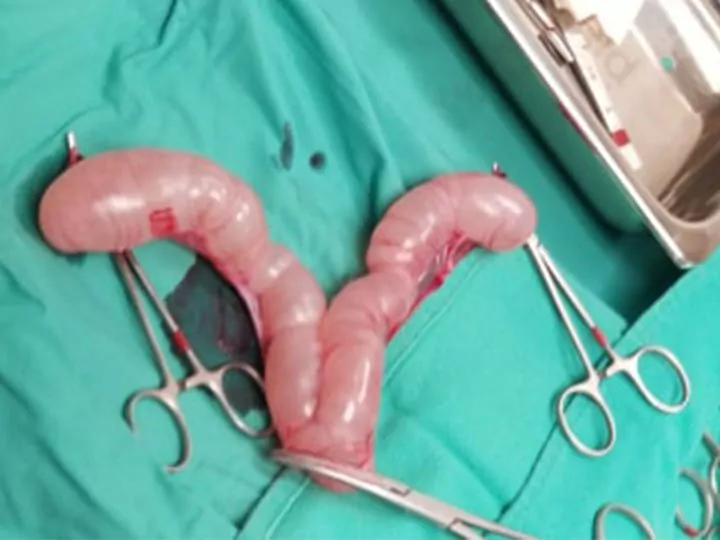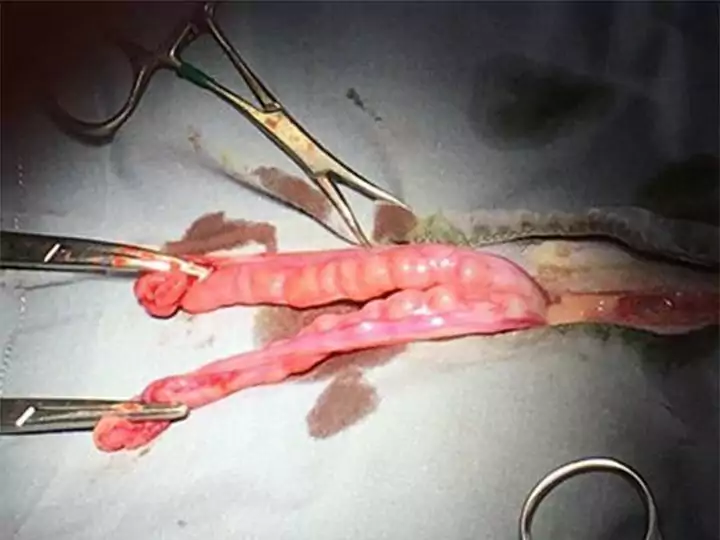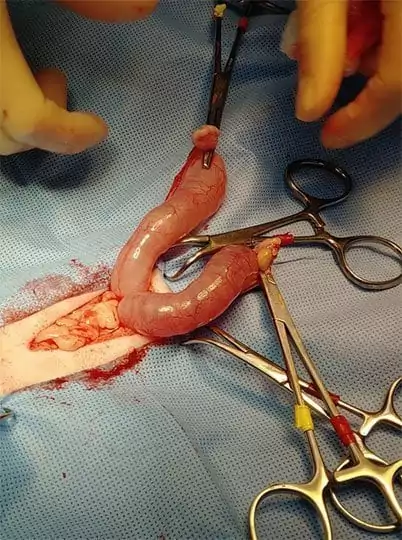Pyometra in cats is a critical condition that affects intact females and is life-threatening if left untreated. Pyometra is still fairly unknown when it is mentioned to intact cat owners (owners of cats that have not been spayed or neutered). It is important that this condition is well understood amongst the veterinary community, in order to pass this information along.
When it comes to spaying a cat, most people think the main benefit is population control. While population control is extremely important, there are other serious conditions that can be prevented with a routine spay.
What is Pyometra in Cats?
Pyometra is an infection in the uterus that is secondary to the hormonal shift that occurs in the uterus. After a female cat is in heat, progesterone levels in the body remain high for several weeks.
When pregnancy does not occur for several heat cycles, the uterine lining thickens to the point that uterine cysts begin to form. This thickened cystic lining will secrete fluids that make for a perfect environment for bacteria to grow.
Since the number of white blood cells that usually fight infection are limited in the uterus during estrus, this contributes to the brewing infection. When pyometra occurs, the muscles of the uterus cannot properly contract, which makes it almost impossible for the body to expel the unwanted infection. As this infection continues to grow in strength, this becomes a life-threatening condition for the cat.

While pyometra can occur at any point in a cat’s life, it is often seen in older cats that have had multiple heat cycles. Pyometra typically occurs between two and eight weeks after the last heat cycle.
What are the Symptoms of Pyometra?
The symptoms of pyometra in cats can vary depending on if the cervix remains open or not. In the cases where the cervix is open, you may see discharge coming from the vagina. Owners will often notice the discharge on the tail, on the skin, or mention how they are finding stains around the house where the cat frequently rests.
Some pet owners also note a foul odor. An open pyometra (when the cervix remains open) may not cause the severe clinical signs that you may see with a closed pyometra.
In cases where the cervix remains closed during the infection, you may notice a distended abdomen. Since the infection has nowhere to drain, fluid will continue to accumulate in the uterus, causing the abdomen to distend.
This distention might be so prominent that the owner notices a difference in the pet. Unfortunately for cats with a closed pyometra, they will become severely ill very quickly. The bacteria will begin to create toxins that will enter circulation. Once the toxins enter circulation, sepsis is soon to come.
There is even a possibility of rupture of the uterus, which leads to a deadly condition called peritonitis.

The symptoms that cat owners will often see at home, in either case, is lethargy, anorexia, excessive thirst (caused by the toxins affecting the kidney’s ability to retain fluid), and vomiting. While having an open pyometra may be the less severe of the two scenarios, they still each require immediate medical intervention.
How to Diagnose Pyometra?
There are a few different ways to diagnose pyometra in cats. In the case of an open pyometra, the presence of discharge alone can determine an infection is present. In the situation of a closed pyometra, the performance of radiographs, ultrasound, and blood work will all work together to diagnose an unknown pyometra.
When the cervix is closed, an enlarged uterus is often seen on radiographs or on ultrasound. The cat may also have an extremely elevated white blood cell count on blood work.
Any time an intact female cat presents clinically ill and painful in the abdominal area, it is always recommended to search for a possible pyometra. It is important to get a detailed history of the patient, as some signs can be subtle.
How is Pyometra in Cats Treated?
Surgical removal of the uterus and ovaries (ovariohysterectomy-spay) is the recommended course of treatment for pyometra in cats. While some owners would like a less invasive treatment, surgery is absolutely the only way to eradicate the infection and prevent future complications.
The possibility of successful treatment without surgery is extremely low. When a cat is diagnosed early, they are good surgical candidates, and often recover fully. Unfortunately, pyometra symptoms can be vague to pet owners, so often cats present in the very ill stages of this condition.
In these cases, it is recommended to have the pet stabilized before and after surgery, and be hospitalized after to monitor for complications. Cats with pyometra are often sent home with a two-week course of antibiotics following surgery.

What can Happen if Surgery is not Performed?
In an ideal situation, a cat with pyometra would be taken to surgery. In some situations, pet owners are reluctant to pursue surgery and would like to discuss the possibility of administering antibiotics first.
This option is completely dependent on the patient’s condition, overall health, and the comfort of the veterinarian providing care. If this route is taken, it is important to discuss the possible complications that can come with this approach. The result of not having the uterus and ovaries removed include:
- Deterioration of health
- Increased pain
- Sepsis
- Rupture of the uterus leading to peritonitis
- Death
Pyometra in cats is still a topic that is unknown to some pet owners and requires sensitivity and care when discussing and recommending treatment. While it is a deadly condition, it is entirely preventable with the performance of a routine spay.
Continuing to spread the importance of spaying and neutering your pets is imperative for the prevention of this dangerous condition.
If you are interested in learning more about this condition read the article Pyometra in Dogs on our blog, or read this article on feline pyometra.
